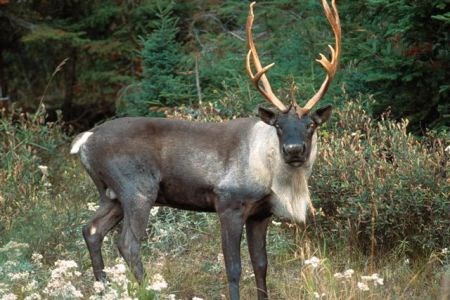The Ministry of Natural Resources and Forestry is starting work on a management plan to protect the small population of caribou inhabiting parts of the Lake Superior shoreline and islands.
It's estimated that the Lake Superior Coast Range mainland and nearshore islands currently support about 50 caribou, but the MNRF cautions that there may be as few as 13 or as many as 227.
Wildlife biologists believe that a population of at least 300 caribou is needed if they are to have a strong chance of survival. "This means that the much smaller and declining group of caribou that currently inhabits the mainland and nearshore island portion of the LSCR is vulnerable" to elimination, a ministry document notes.
Larger islands offshore, including Michipicoten and the Slate Islands, have supported the majority of the LSCR herd in recent years, but the MNRF says they are also subject to population boom and bust cycles related to predation by wolves and the availability of forage.
Earlier this year, the province and some partners conducted what the MNRF described as "emergency" translocations of caribou to address the potential disappearance of both the Slate and Michipicoten populations. Animals were airlifted to the Slates and to Caribou Island from Michipicoten.
In a discussion paper currently posted on the province's Environmental Registry, the MNRF requests input prior to starting work on a draft management approach in consultation with stakeholders and Indigenous communities next fall.
A survey attached to the discussion paper asks participants to rank their preferences among several different goals, including long-term occupancy of caribou in the LSCR (partly through arranging for "connectivity" between the LSCR herd and more established herds much farther north) and maintaining caribou only on Michipicoten and/or the Slate Islands.
Ministry spokesperson Jolanta Kowalski told Tbnewswatch the paper also outlines a range of actions that could be implemented to achieve whatever goal is ultimately chosen, "including things like predator control, habitat management and habitat protection."
Participants in the survey are asked to indicate how strongly they support or oppose actions such as limiting habitat disturbance from new roads, trails and utility lines, or how they feel about changes in forest management that could include creating and maintaining large areas of conifer forest.
"We're hoping people will go the website, read the posting, and give us their input on what they think the plan for this specific group of caribou should be," Kowalski said.
The deadline for feedback on the initial discussion paper is May 3, 2018.
